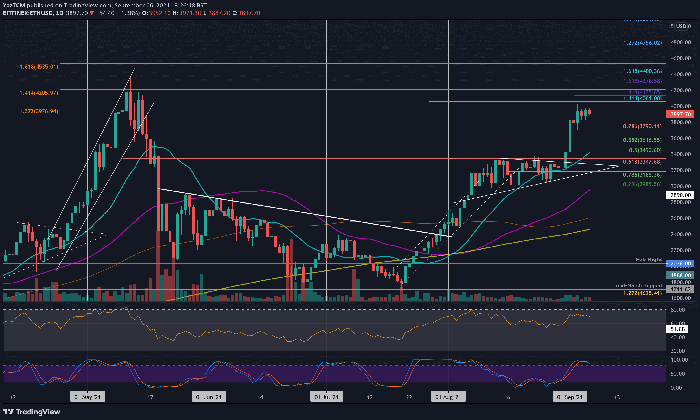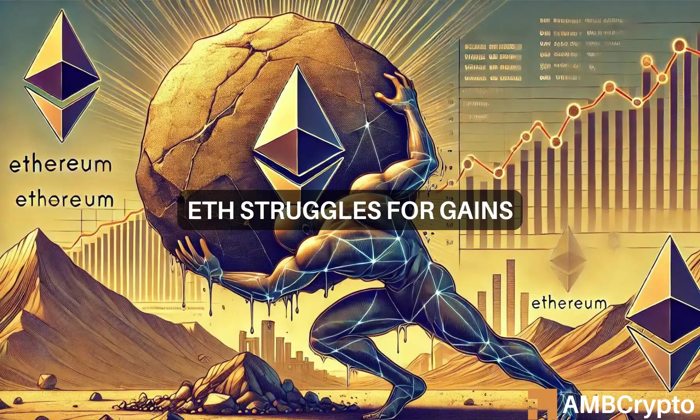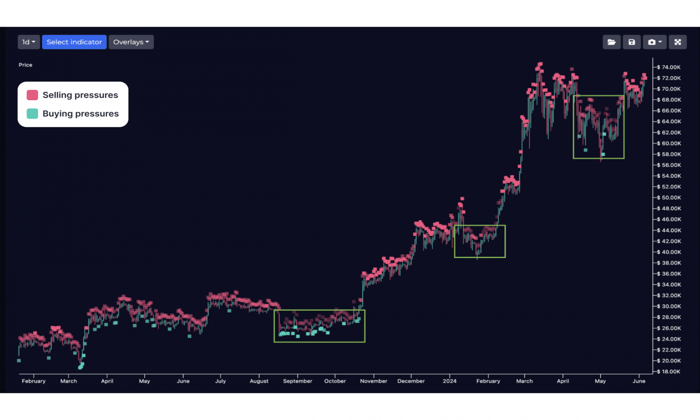Stablecoins have emerged as a revolutionary force in the blockchain ecosystem, providing much-needed stability amidst the often volatile cryptocurrency market. Unlike traditional cryptocurrencies, stablecoins are pegged to stable assets such as the US dollar or the euro, making them an attractive option for both investors and everyday users. The benefits of stablecoins are numerous—they facilitate faster transactions, lower fees, and serve as a reliable medium of exchange, making them ideal for those seeking to navigate the complexities of digital finance. As institutional interest surges, with banks and financial institutions exploring their own stablecoin offerings, the stablecoin market is poised for significant expansion. Understanding stablecoins and their utility is essential for anyone looking to engage with the evolving landscape of blockchain technology.
Digital currencies, often referred to as stable digital assets, are gaining traction as a cornerstone of modern financial systems. These assets, which maintain a fixed value by being tied to a reserve currency, are seen as a bridge between the volatile world of cryptocurrencies and traditional fiat currencies. The shift towards incorporating stable digital currencies into finance is creating exciting opportunities for investment, payments, and even geopolitical shifts. As the adoption of these assets accelerates, many are beginning to explore their implications on the broader economy and financial infrastructure. By delving into the various aspects of stable digital assets, from their comparative stability to the benefits of their widespread use, we can better appreciate their growing significance in today’s digital marketplace.
Understanding Stablecoins in the Cryptocurrency Landscape
Stablecoins have emerged as a pivotal component of the cryptocurrency landscape, bridging the gap between traditional fiat currencies and the world of digital assets. They are designed to maintain a stable value by pegging their worth to a reserve of assets, typically government-backed currencies like the US dollar or euro. This feature sets stablecoins apart from other cryptocurrencies, which are often subject to high volatility and speculative trading. By providing a more consistent value, stablecoins allow users to transact with minimal risk of abrupt price fluctuations, thus enhancing their appeal for everyday transactions and long-term investments.
The stablecoin market has witnessed unprecedented growth as more institutions recognize their potential benefits. By acting as a digital representation of physical currencies, stablecoins facilitate borderless transactions, reduce transaction costs, and provide an access point for individuals in regions with limited banking infrastructure. This has sparked increased interest from banks and fintech companies, fueling ongoing discussions around stablecoin adoption and regulation. As these digital currencies gain traction, they are shaping how consumers and businesses interact with money, reflecting a shift towards a more integrated economic model of the future.
The Advantages of Using Stablecoins
Stablecoins offer numerous benefits that make them an attractive option for both consumers and businesses. One of the primary advantages is stability. Unlike their more volatile counterparts, stablecoins maintain a consistent value, making them a reliable means of exchange and store of value. This volatility dampening makes stablecoins particularly useful in situations where price stability is crucial, such as micropayments, remittances, and international trade. The ability to execute transactions without the worry of sudden price fluctuations allows users to confidently engage in digital commerce.
Moreover, stablecoins enhance liquidity within the market by providing traders with a safe harbor during volatile market conditions. As many traders leverage stablecoins as a means to preserve capital when experiencing a downturn in cryptocurrency markets, they can quickly convert back to traditional fiat without the lengthy processes associated with banks. This functionality not only facilitates smoother trading transitions but also supports the overall growth of decentralized finance (DeFi) platforms, which rely heavily on stablecoin liquidity to function effectively and efficiently.
Comparing Stablecoins and Traditional Cryptocurrencies
The fundamental difference between stablecoins and traditional cryptocurrencies lies in their valuation mechanisms. While traditional cryptocurrencies like Bitcoin and Ethereum are known for their speculative nature and price volatility, stablecoins are designed to represent a stable store of value. This stabilization makes them particularly appealing for users who want to escape the market’s unpredictability. The stablecoin market has been evolving rapidly to meet user needs, bridging the gap between the unpredictable nature of crypto assets and the stability of fiat currencies.
Additionally, stablecoins can act as a catalyst for broader cryptocurrency adoption. By providing a less volatile entry point, new users may be more inclined to experiment with digital assets, knowing they can transact with a currency that won’t plummet in value overnight. In contrast, the wild swings of traditional cryptocurrencies can deter potential adopters. A stablecoin is often the first digital asset that new traders and investors encounter, allowing them to familiarize themselves with blockchain technology while maintaining financial security.
The Growing Stablecoin Adoption by Institutions
Institutional investment in stablecoins is on the rise, as evidenced by recent announcements from major financial institutions and state governments planning to launch their own stablecoins. For instance, Fidelity’s impending launch of its corporate stablecoin is a significant indicator of how traditional finance is beginning to embrace blockchain technology. These developments hint at an evolving landscape where established financial entities leverage stablecoins to offer competitive and modern solutions to their clientele, potentially transforming service delivery in the finance sector.
Moreover, the ongoing geopolitical instability in various parts of the world has increased the appeal of stablecoins as a reliable alternative for cross-border transactions. In regions experiencing high inflation or currency devaluation, stablecoins provide a means for individuals to protect their wealth and facilitate transactions without interruption. By creating a more resilient financial infrastructure through the adoption of stablecoins, institutions are responding proactively to emerging economic challenges and the necessity for greater financial inclusivity.
The Future of Stablecoins in the Digital Economy
The future of stablecoins looks promising as they continue to gain traction within the digital economy. As more governments and financial institutions experiment with developing their own stablecoins, we can anticipate a shift in how digital assets are integrated into the broader economy. The ability of stablecoins to facilitate seamless transactions across borders can contribute to increased financial inclusion and accessibility, enabling more individuals to participate in the global marketplace.
However, challenges remain, especially concerning regulatory frameworks and the implications of central bank digital currencies (CBDCs). As institutions move towards adopting stablecoins, policymakers may need to address concerns related to consumer protection, monetary policy implications, and competition with traditional banking systems. The coming years will likely reveal a landscape where stablecoins and CBDCs coexist, complementing each other as tools for financial modernization and innovation.
Frequently Asked Questions
What are stablecoins and how do they work?
Stablecoins are a type of cryptocurrency that are designed to maintain a stable value, usually pegged to a fiat currency like the US dollar or euro. They utilize various mechanisms to ensure price stability, such as collateralization with reserves or algorithmic adjustments. This makes stablecoins different from traditional cryptocurrencies like Bitcoin, which are often subject to high volatility.
What are the benefits of stablecoins compared to cryptocurrencies?
The main benefits of stablecoins compared to traditional cryptocurrencies include price stability, reduced volatility, and greater usability for transactions. Stablecoins can provide a safer way for crypto traders to hedge against market fluctuations, enabling them to maintain value and liquidity without converting to fiat. This usability makes them ideal for everyday transactions and integration with financial systems.
How is the stablecoin market evolving in recent years?
The stablecoin market has seen significant growth and evolution, with many financial institutions and governments exploring the launch of their own stablecoins. Notable examples include Fidelity’s upcoming corporate stablecoin and Wyoming’s state-backed stablecoin. This trend indicates a broader acceptance and integration of stablecoins into mainstream finance, helping to bridge the gap between blockchain technology and traditional banking.
What distinguishes stablecoins from other cryptocurrencies?
Stablecoins differ from other cryptocurrencies mainly through their stability. Unlike major cryptocurrencies such as Bitcoin or Ethereum that experience price volatility, stablecoins are pegged to fiat currencies, ensuring their value remains steady. This stability makes them suitable for practical use cases like payments and remittances, contrasting with the speculative nature of many cryptocurrencies.
How is stablecoin adoption impacting traditional banking systems?
Stablecoin adoption is paving the way for innovative payment systems that compete directly with traditional banking services. By providing efficient, low-cost transaction options, stablecoins challenge established financial institutions and encourage them to explore blockchain technology, potentially leading to enhanced financial services and greater competition in the market.
What role do stablecoins play for cryptocurrency traders?
For cryptocurrency traders, stablecoins serve as a vital tool for managing risk. During market downturns, traders often convert their volatile assets into stablecoins to preserve value without engaging in fiat currency conversions. This crossover underscores the importance of stablecoins as a safety net within the volatile cryptocurrency landscape.
What challenges do stablecoins address in the current financial ecosystem?
Stablecoins aim to address several challenges within the current financial ecosystem, such as the high volatility of traditional cryptocurrencies and the inefficiencies of conventional payment systems. They offer seamless transactions, lower costs, and the ability to function as digital equivalents of fiat currencies, thereby enhancing financial accessibility and promoting cryptocurrency use in everyday transactions.
| Key Points | Details |
|---|---|
| Introduction of stablecoins | Mainstream adoption planned by banks, companies, and US state. |
| Functionality | Stablecoins represent stable currencies (like dollar, euro) and offer low-cost payment systems. |
| Market Utility | Act as a hedging tool for traders, especially in declining markets. |
| Overall Crypto Market | Market cap fell 25%, but stablecoin infrastructure is growing. |
| Fidelity Corporate Stablecoin | Launching in May, leveraging $15 trillion in assets. |
| USD1 from Trump Venture | A dollar-backed stablecoin launched on Ethereum and Binance Smart Chain. |
| Wyoming’s State Stablecoin | First government-issued dollar-backed stablecoin launching in May. |
| Texas’ Avit Stablecoin | Vantage Bank partnered to launch a bank-backed stablecoin. |
| Bitso’s MXNB Stablecoin | Peso-backed stablecoin launched, increasing stablecoin adoption. |
Summary
Stablecoins are transforming the blockchain landscape by providing stable and secure alternatives that bridge the gap between traditional fiat currencies and the volatile world of cryptocurrencies. As major entities, including banks and state governments, initiate their own stablecoins, the trend is a clear indication of stablecoins’ rising prominence and essential role in facilitating efficient transactions and trading strategies. This growing adoption underscores the need for robust stablecoin frameworks to support the ever-evolving digital economy.
Stablecoins have emerged as a pivotal innovation in the realm of digital finance, bridging the gap between cryptocurrencies and traditional fiat currencies. As the question of “what are stablecoins” gains traction, many are realizing their potential to revolutionize the stablecoin market. Unlike their more volatile counterparts, these digital assets aim to maintain a stable value by pegging themselves to established currencies such as the dollar and euro, providing a safer alternative for transactions. The benefits of stablecoins extend beyond mere price stability; they also facilitate swift and cost-effective payment solutions that integrate smoothly with existing financial infrastructures. With growing stablecoin adoption, financial institutions and blockchain companies alike are increasingly exploring their unique advantages, marking a transformative shift in the financial landscape.
Digital fiat assets, often referred to as stablecoins, represent a groundbreaking development in the cryptocurrency landscape. Their inherent stability distinguishes these digital currencies from the high volatility typically associated with cryptocurrencies, positioning them as a reliable option for both consumers and traders. As more entities such as banks and investment firms venture into the realm of tokenized dollars, the market for these digital assets is rapidly expanding. Furthermore, the advantages of these coins range from enhanced transaction speeds to reduced fees, making them an attractive alternative to conventional financial systems. The evolving narrative around digital currencies highlights the growing relevance of such assets in providing financial solutions that intersect with traditional banking services.















